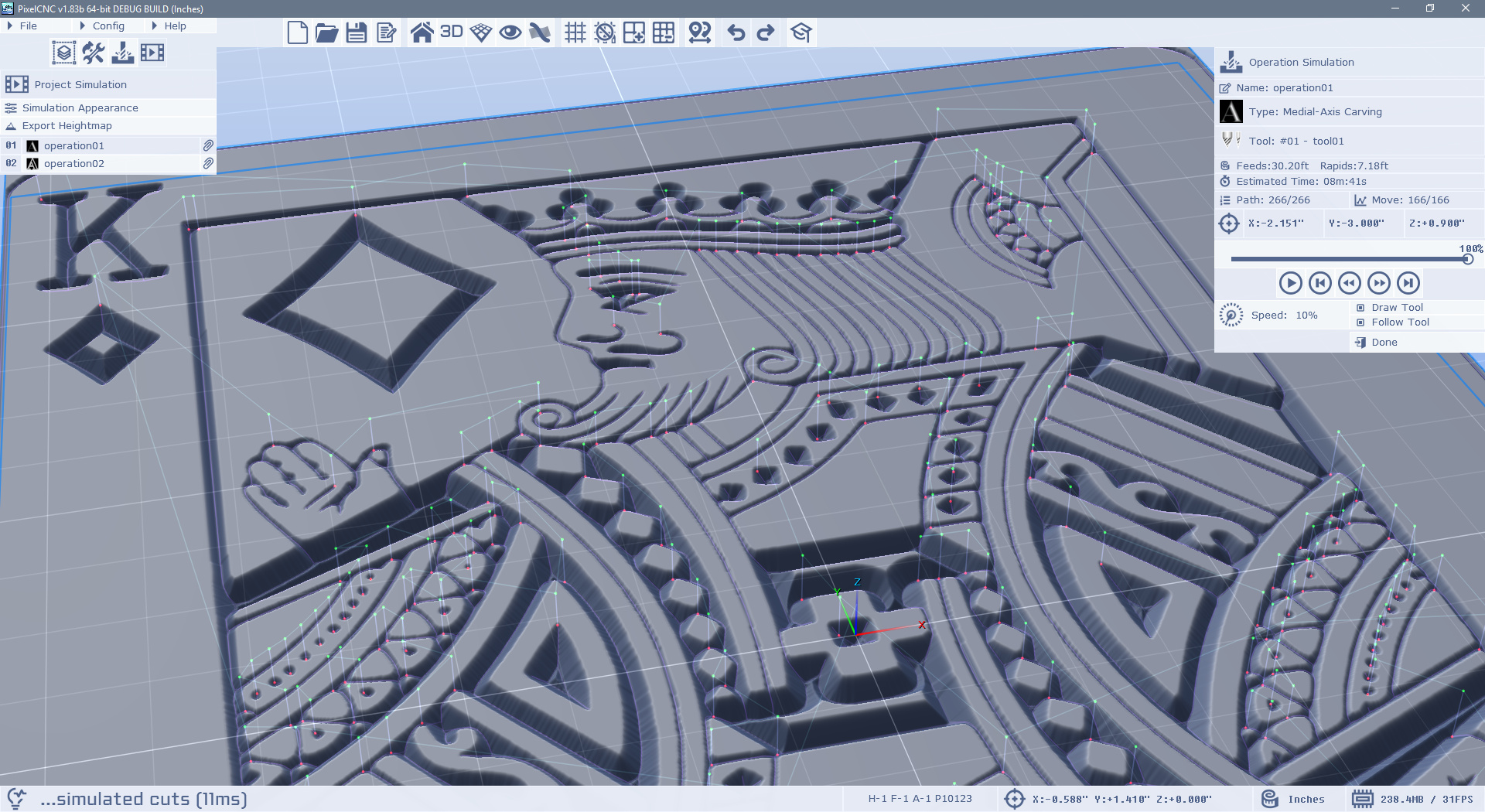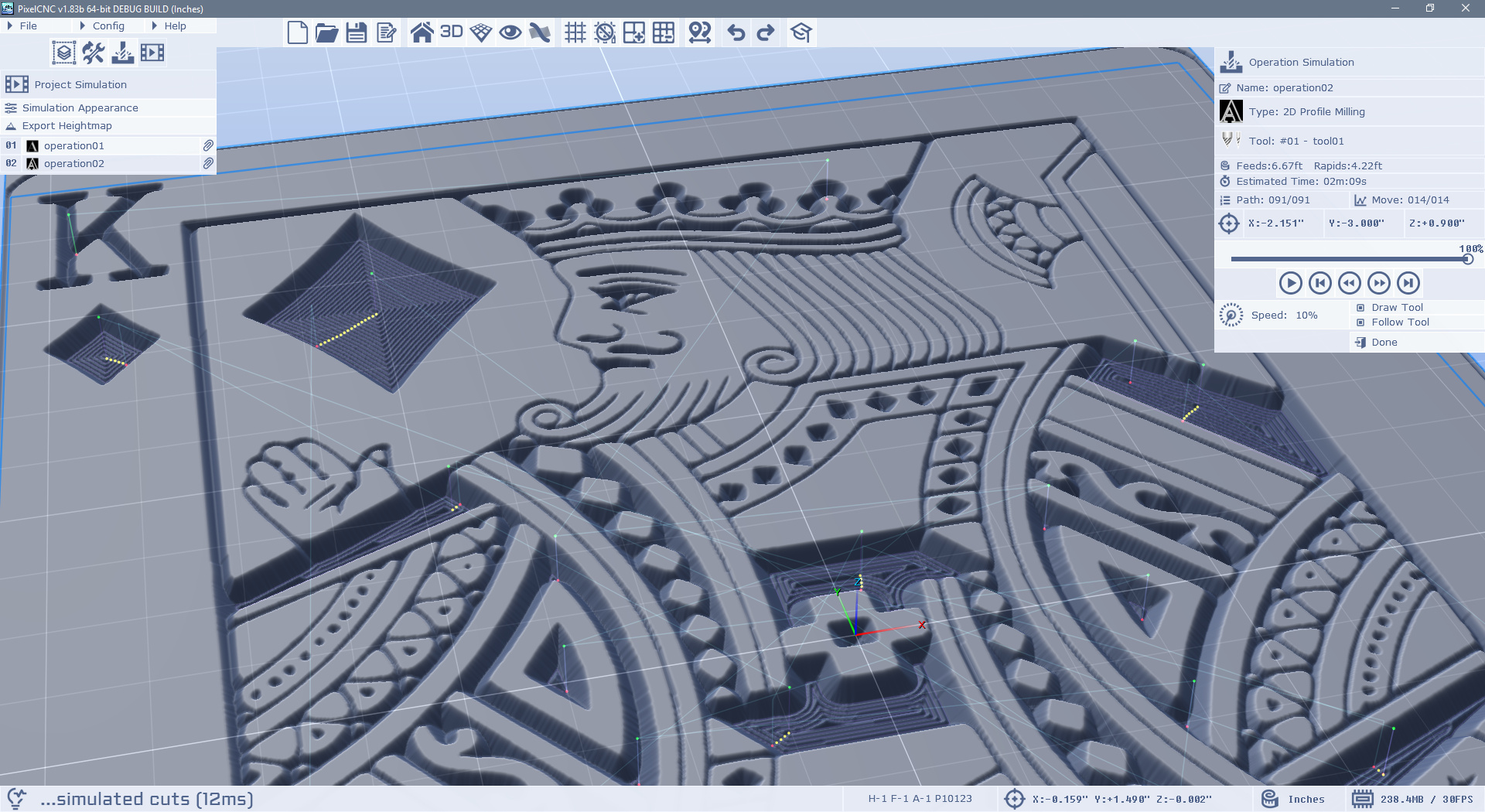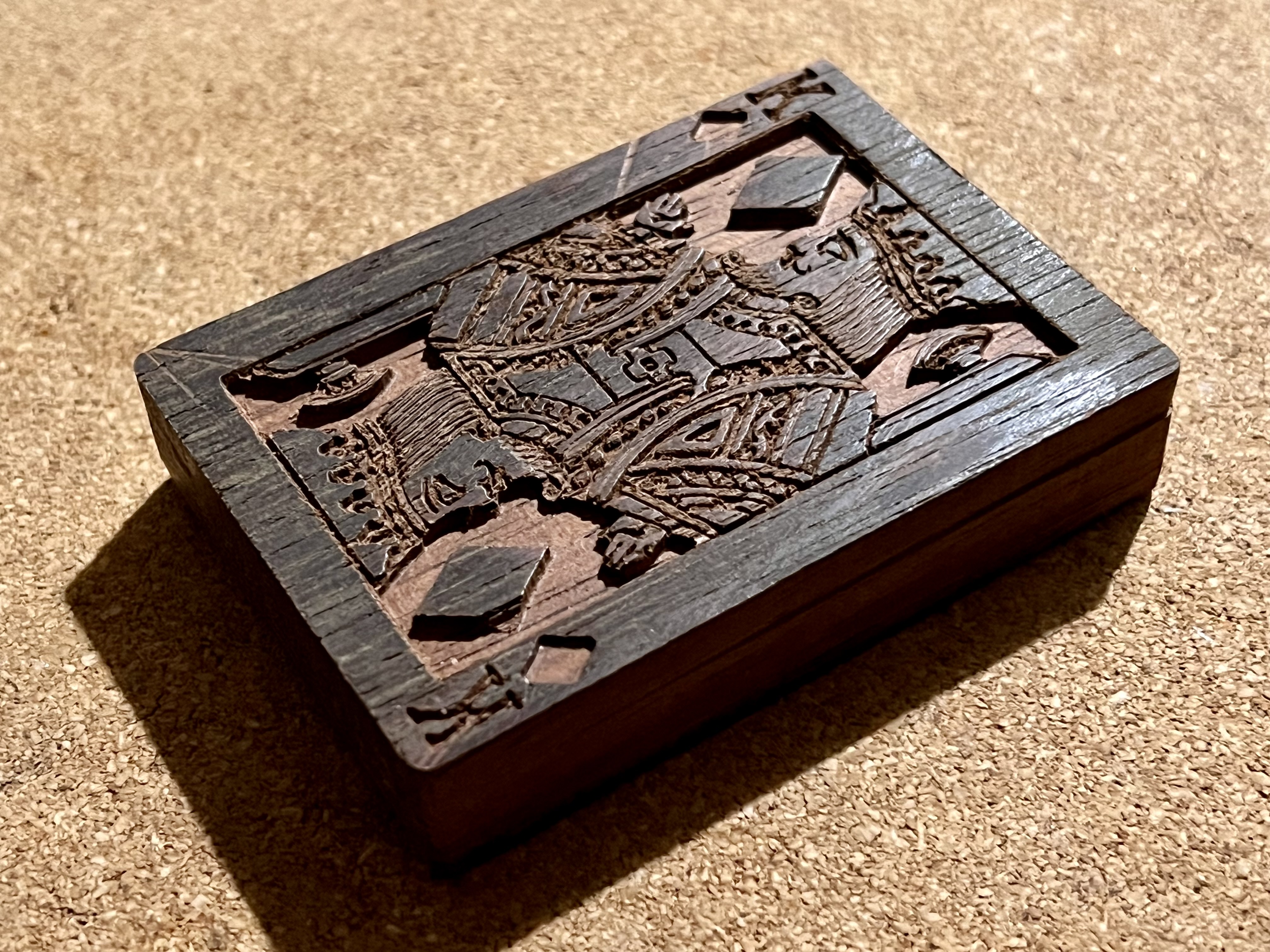I’ve been trying to do a carving of a playing card. It’s been a growth journey.

My first attempt using just black and white to set carved depth worked but didn’t produce an easy viewable outcome. This set me into seeing if I can do a better 3D design.
I decided to try creating a multi tiered design with various heights to simulate a 3D so that the king looks as though standing in front of the rear surface/wall.
I targeted making 3 levels. 1: the large diamond inverted so that it stands high rather than sunken, 2: the surround about the large diamond and the king’s hand lower, 3: the kings face lower than the hair.
In doing so the approach was I converted the image into a paths layer. From the paths layer I used the tools to select particular paths eg a diamond, With that I created a new paths layer from the paths and filled the closed paths with a flat fillet with Shapes from Paths which made a new raster layer.
I set the z layer height with additive blending. With the diamond surrounds I also did a path selection and fillet. I used it then with a subtractive blend to take away/lower the surface. Similarly to the king’s face but with it not as low.
Getting the z heights right was fiddly. I need better discipline with that.
Unfortunately I did miss raising the cuffs on the sleeve. That was black and sunken. I should have set it higher above the hands. Maybe I will fix that if I cut this again.
I’m sure there are many techniques yet for me to use to simplify. One of course is to select multiple similar areas to create as one in a new raster layer.

I’m happy with the outcome as it’s heaps better layered except now that I’ve cut it I see that viewing a wood carving with so much detail is hard. There might needs to be right. The only contrast that the eye has is shadows.
I wonder if anyone has hints on how to finish such a carving?
Russ







